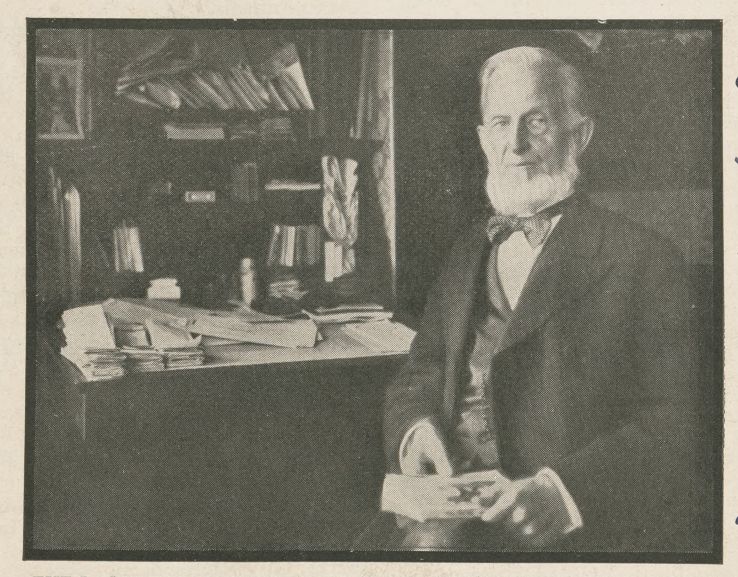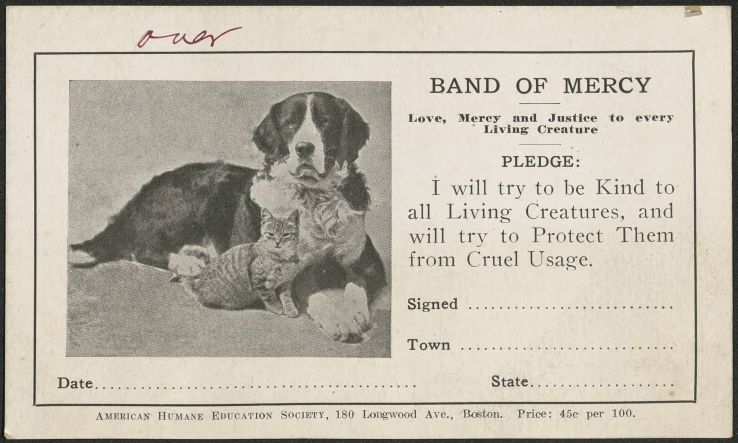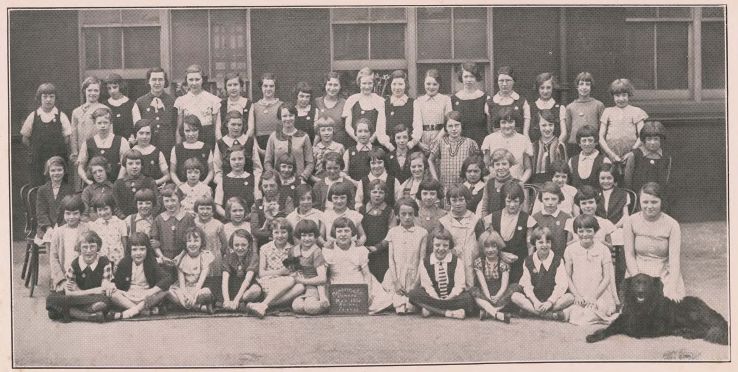
Humane Education
What if it was possible to stop animal cruelty from ever occurring by teaching children to protect animals? This question is the guiding principle of humane education, a field that aims to teach children compassion and respect for living things. Humane education as a field was created at the end of the 19th century by animal protection activists such as George T. Angell, the founder of the Massachusetts Society for the Prevention of Cruelty to Animals (MSPCA) and the American Humane Education Society.

Early humane education was taught through school-based programs and Bands of Mercy, which were locally-led groups dedicated to promoting animal welfare. The first Band of Mercy was established in the United Kingdom in 1875 by Catherine Smithies. Using Smithies’ organization as a model, Angell and fellow activist Rev. Thomas Timmins established the first Band of Mercy in the United States in 1882. Over the next twenty years, many local Bands of Mercy were established around the United States, and by the beginning of the 20th century there were more than 27,000 Bands of Mercy in the U.S.

One of the aims of humane education was to teach children to be compassionate by helping them extend the kindness they showed to one group of animals toward all animals. For instance, children were encouraged to consider how they treated their pets, and how they should extend the same treatment to all animals equally. The belief among proponents of humane education was that teaching children to treat animals kindly would cause those children to extend the same kindness to other humans. In “The Teacher’s Helper in Humane Education” (1920), American Humane Education Society President Francis H. Rowley wrote,
The child seems naturally more interested in animals than in people. It is easy to awaken in the heart of a child the sense of justice toward a defenseless animal unable to voice its sufferings and wrongs. Its appeal stirs an elemental characteristic of human nature. Once awakened in the child toward the animal, this sense of justice naturally makes itself felt when a human being’s rights are invaded or his claims denied.

The interest in humane education in public schools diminished throughout the mid-20th century, with curricula focusing more intensely on science and mathematics, but humane education initiatives still thrive today. In addition to its original goal of teaching kindness, compassion, and empathy toward animals, today’s humane education programs focus on the interconnectedness of humans, animals, and the planet that we share.

The resources highlighted in this post, and many more digital resources from the Animal Turn project, are available in the Libraries Rare and Unique Digital Collections, which provides access to over a million images, drawings, video, audio recordings, and textual materials documenting NC State history and other topics.